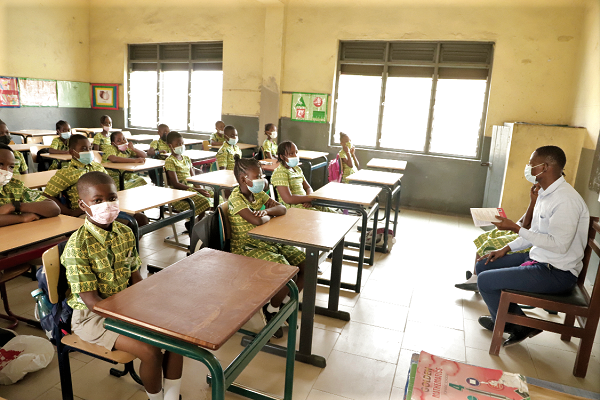
Literacy rate now 69.8 per cent
Literacy rate in the country is now at 69.8 per cent, a report of the 2021 Population and Housing Census conducted by the Ghana Statistical Service has indicated.
This is an improvement on the statistics of the 2010 census, when the rate was 67.1 per cent.
Advertisement
The 2021 data cover people from age six and above who can read and write in any language.
Of the number, males make up 74.1 per cent, while females constitute 65.4 per cent.
The Greater Accra Region has the highest figure of 87.9 per cent, while the Savannah Region recorded the lowest of 32.8 per cent.
Titled: “Ghana 2021 Population and housing census general report volume 3D, literacy and education", the report also presents the educational profile of the population — three years and older and literacy of persons six years and older.
The data on literacy, school attendance and educational attainment are disaggregated by sex, age, type of locality and region of residence.
The highlights on literacy pertain to three age brackets: six years and older, 11 years and older and 15 years and older, while education is three years and older, 15 years and older and 18 years and older.
Regional breakdown
The regional breakdown is as follows: Ashanti, 78 per cent; Eastern, 75.7 per cent; Central, 75.2 per cent; Western, 72.6 per cent, and Bono, 71.5 per cent.
Others are Volta, 70.9 per cent; Ahafo, 68.6 per cent; Western North, 62.8 per cent; Bono East, 56.3 per cent, and Oti, 50.6 per cent.
The rest are Upper East, 48.1 per cent; Upper West, 46.0 per cent; Northern, 41.3 per cent; North East, 35.9 per cent, and Savannah, 32.8 per cent.
The report also reveals that four in five (80.6 per cent) of the urban population six years and older are literate in at least one language, compared to half, 55.2 per cent, of the rural population of the same age, with the rural-urban differential being similar for males and females.
It further states that four out of the 16 regions have more than three-quarters, 75 per cent, of their population six years and older being literate, with Greater Accra recording the highest, 87.9 per cent, while Savannah has the lowest of 32.8 per cent.
Additionally, the report says that the male population in eight regions have literacy rates below the national figure, compared to females in 12 regions.
And across the three age brackets, about half of females in rural areas are not literate in any language, compared to a little over a third of males.
It adds that three in 10 — 30.2 per cent — people six years and older are not literate in any language, and is higher among females, 34.4 per cent, than males, 25.9 per cent.
School attendance
On school attendance, the report further indicates that the proportion of the population three years and older that have never attended school ranged from nine per cent in Greater Accra to 57.4 per cent in Savannah.
And the proportion of persons three years and older currently attending school in the Northern, Savannah, North East, Upper East and Upper West regions is about twice as high as those who attended in the past.
On tertiary education, four in 10 — 40.7 per cent — of the population 18 years and older currently attend tertiary school, while in the 2010 census, 13 per cent of people attained tertiary education.
The report also said that among people 15 years and older (females) who attended school in the past attained JSS/JHS education, 54.3 per cent, as compared to their male counterparts, 45.7 per cent in urban areas, and almost equal the proportion of females, 50.6 per cent, and males, 49.4 per cent, in rural areas.
The Head of Census Methodology at the GSS, Dr Pearl Kyei, said her outfit would soon issue a report to explain the data contained in the literacy and education report.



